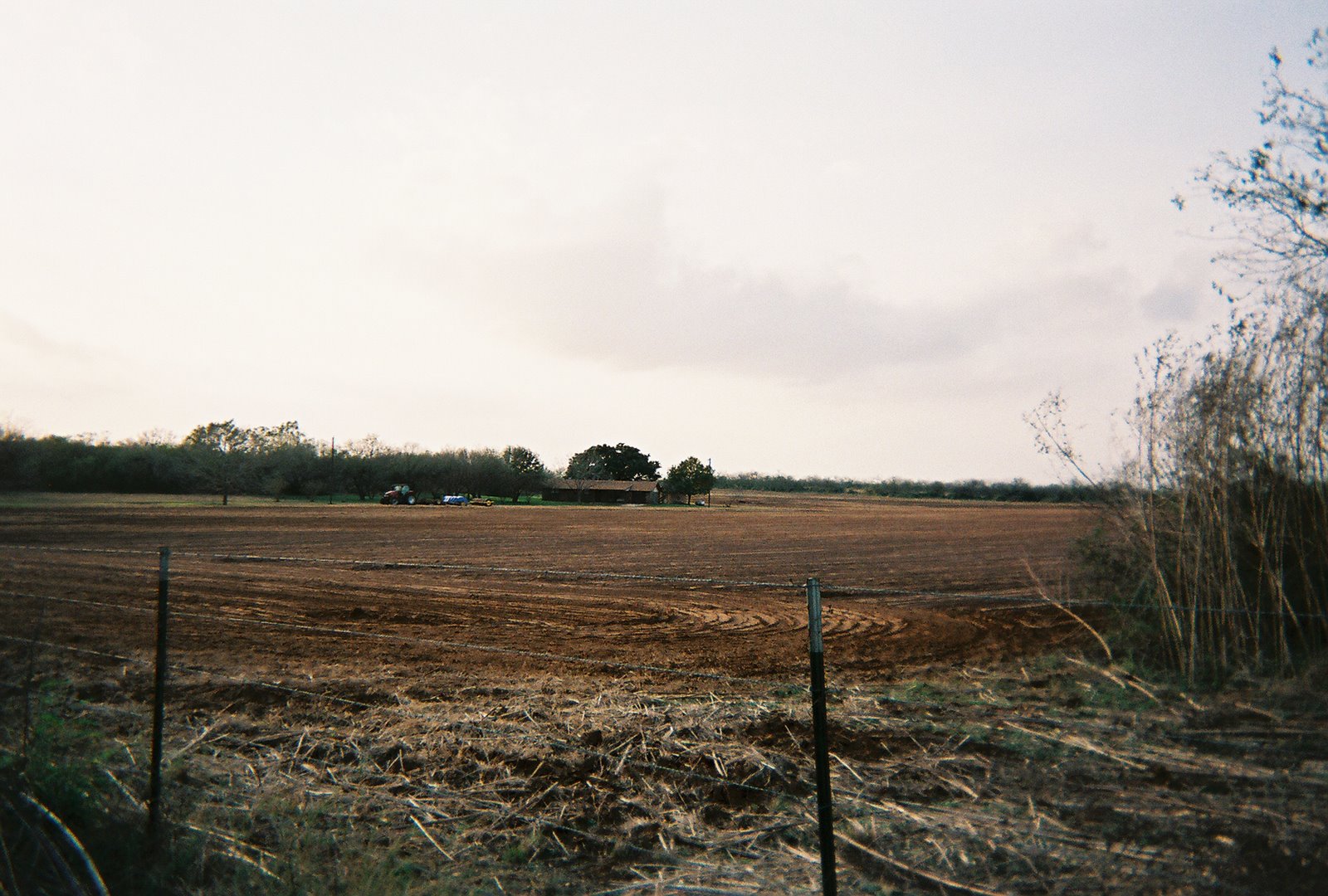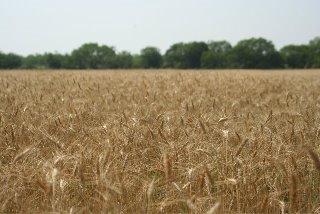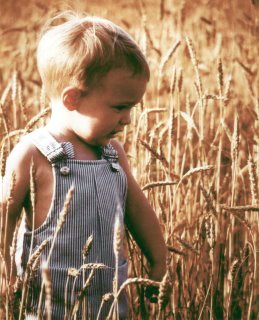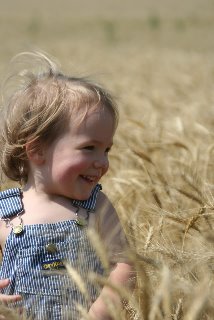 Needing a agricultural tax exemption and wanting the fields to be cleared, we agreed to allow H.B., a 20-something young man with farm equipment and some experience to plant a crop of winter wheat on our property. Since the land had not been farmed conventionally in four years, it would be possible for us to apply for organic certification if we were willing to follow the strict requirements of the National Organic Standards Board. (It must be chemical free for 36 months.) Although H.B. had no experience with organic farming, he was willing to learn. I promised to find and purchase the seed, pay for soil testing and amendments, locate a market for the crop, and to do the research and complete the certification process. So we were off on our adventure.
Needing a agricultural tax exemption and wanting the fields to be cleared, we agreed to allow H.B., a 20-something young man with farm equipment and some experience to plant a crop of winter wheat on our property. Since the land had not been farmed conventionally in four years, it would be possible for us to apply for organic certification if we were willing to follow the strict requirements of the National Organic Standards Board. (It must be chemical free for 36 months.) Although H.B. had no experience with organic farming, he was willing to learn. I promised to find and purchase the seed, pay for soil testing and amendments, locate a market for the crop, and to do the research and complete the certification process. So we were off on our adventure.The first issue was finding seed. Wheat seed in general was scarce in Texas. And it was already late in the season when we began to look. I located organic seed in Missouri, but the cost plus shipping would have made it unfeasible. The National Organic Standards offer the option of using untreated seed when organic seed is not available, so we decided to go that route. H.B. assured me he could get that from a local seed/feed store and I gave him the green light. I should have gone with him.
We purchased the seed and by mid-December it was in the ground. Shortly after the planting I met with our consultant to begin developing a longer-range strategic plan for the place and to do our initial soil testing. We were walking throu
 gh the field and he picked up a loose seed lying on the surface of the soil. It was colored dark red. He told me he thought we had planted treated seed. He said that treated seed was dyed like this to keep it from being used for food. I told him I’d been assured the seed was untreated and thought I had written documentation. He said that as long as I had it in writing, I’d probably do fine with the certifiers.
gh the field and he picked up a loose seed lying on the surface of the soil. It was colored dark red. He told me he thought we had planted treated seed. He said that treated seed was dyed like this to keep it from being used for food. I told him I’d been assured the seed was untreated and thought I had written documentation. He said that as long as I had it in writing, I’d probably do fine with the certifiers.I found an organic feed mill near Austin that was interested in purchasing the crop if we were able to get it certified. I found a certifier and began to complete the many forms required. One of the first requirements was to verify that we’d planted acceptable seed. I checked my paperwork from the seed store. It said nothing about the seed’s being untreated. I called and asked. They hemmed and hawed. They couldn’t be sure about that. I asked for the name of the supplier.
I phoned the supplier and learned that the seed was indeed treated (Captan 400 and Lorsban 30). The clock on organic production was immediately set back 36 months. Very disappointing. (Note to self: on really important matters, deal breakers, do not depend on people with no more experience than yourself to handle them.) H.B. was disappointed as well.
So we had a conventional crop the first time around. We fertilized it and watched it grow over the winter. Each month when I returned it was more beautiful.
In January, the sprouting seeds were just appearing above the surface of the red dirt.
In February, the wheat was clearly taking over the fields.
By March the place was covered in a lush, blue-green grass and heads of grain were forming, a stark contrast to the forbs and grasses that had owned the fields the summer before.
By April the green was blended with gold.

And by May, the fields were gold and ready for harvest.
On May 9 Melinda and I drove up to the farm to see the harvest come in. Alan, Kat, and Madison joined us. In June of 1981, when Alan was almost three, we
 photographed him in a wheat field across the road from Melinda’s aunt’s home in Portia, Arkansas. That photo has hung in our hallway since then.
photographed him in a wheat field across the road from Melinda’s aunt’s home in Portia, Arkansas. That photo has hung in our hallway since then.
Here was the opportunity to photograph Madison, now almost three, in a wheat field, wearing her dad’s overalls. And it was Papa and Mimi’s wheat field. So they came along for the photo shoot.
Haven’t gotten the full report yet on the yield. H.B. guessed it would be around 15 bushels/acre. We’re now working on that longer-range plan, transitioning toward organic certification by June of 2011.
No comments:
Post a Comment